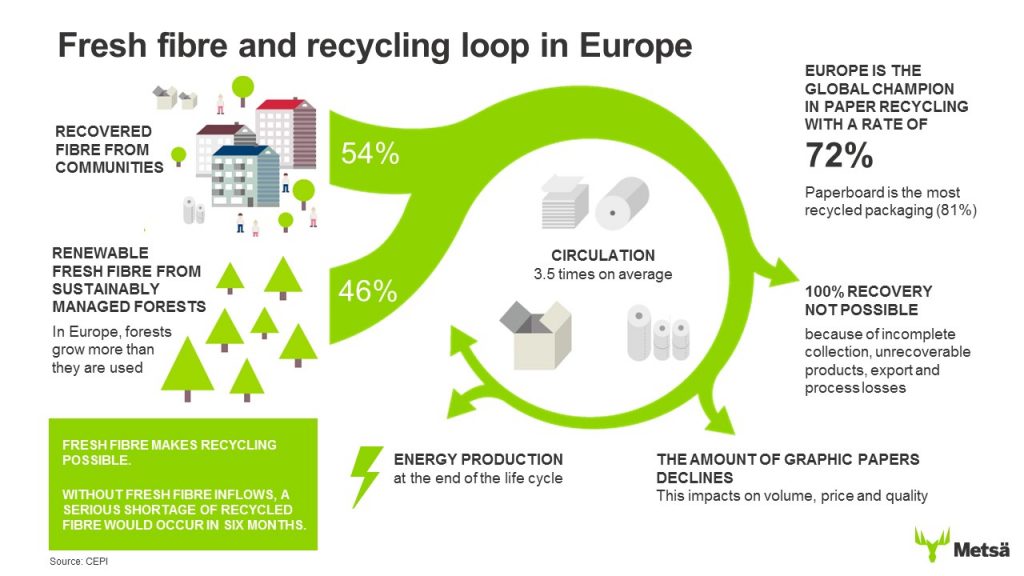Description
The role of fresh forest fibre in circular economy and recycling loop.
The key idea of circular economy is to use materials as efficiently as possible and more than once. In Europe, fibre-based packaging is one of the most efficiently recovered and recycled materials. However, recovery alone is not enough – fresh fibre inflows are needed to keep fibre loop alive and make recycling possible.
The role of fresh fibre in fibre circulation is important. The qualities of fresh fibre, such as purity and strength, of fibre deteriorate on each time it is used. Therefore it cannot be recycled endlessly nor used to any purpose. Without fresh fibres, a serious shortage of recycled fibre would occur in six months. Metsä Group produces fresh fibre pulp and paperboard made from wood from sustainably managed northern forests.
Added value
Purity and strength are the key qualities of fresh fibre. It is a safe choice for food contact. Fresh fibre products are recyclable and they keep the fibre circulation alive.
Fibre circulation in Europe:
- The share of recovered fibre is 54%.
- The share of fresh fibre is 46%.
- A fibre is used 3.5 times on average.
- A fibre cannot be used endlessly, because the quality, such as strength and purity deteriorate on each time of use. In recycling process the lowest quality fibre is separated to sludge – often used for energy production.
- Fresh fibre is needed to keep the fibre circulation alive.
Challenges
- The approach to circular economy does not fully take into account the role of bio-economy and upcycling opportunities.
- The importance of bio-based packaging has not been fully recognised despite of its features such as renewability and recyclability.
- The key role of fresh fibre in fibre recycling loop is not fully recognised.
